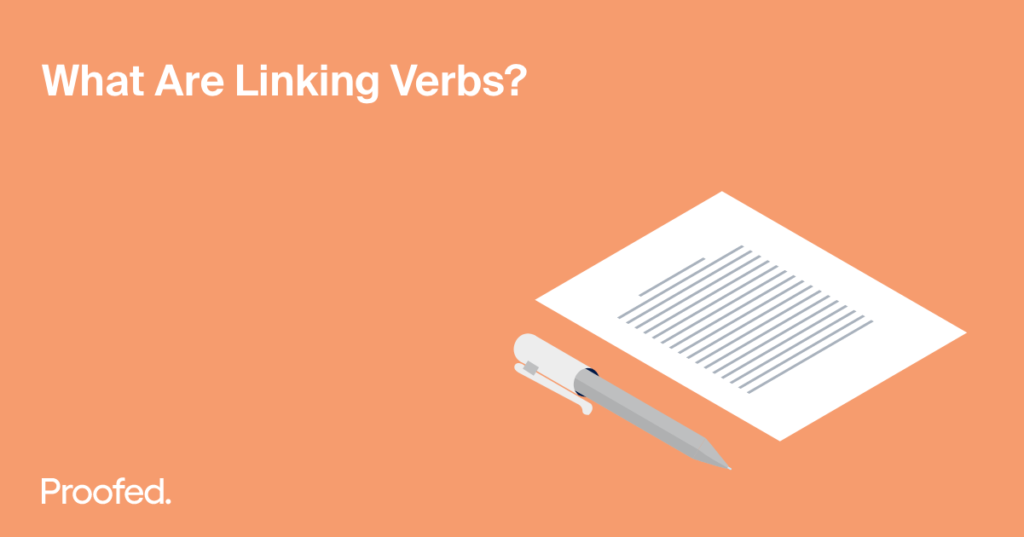Linking verbs are a key part of English. And knowing how they work can help you to avoid errors in your writing. In this post, we’ll explain the basics.
What Are Linking Verbs?
Linking verbs connect a subject to a subject complement:
- The subject of a sentence is the person or thing that the sentence (or clause) is about. It can be a noun, noun phrase, or pronoun.
- A subject complement tells us something about the subject. This will usually be an adjective phrase, noun phrase, adverb phrase, or prepositional phrase.
A linking verb, then, works by linking these two things. The verb “be” and its various forms (e.g., is, are, was, were) are the most common linking verbs. For example:
Carol was tired.
In this sentence, “Carol” is the subject, “was” is the linking verb and “tired” is the subject complement. Other linking verbs include “seems” and “becomes,” as well as sensory verbs such as “feels,” “tastes,” “smells,” and “sounds.”
Describing and Reidentifying
Linking verbs do not tell us what a subject is doing. Instead, they work with the subject complement to describe or reidentify the subject. For instance:
The bed is very comfy.
Terry and June are happy people.
In these sentences, the linking verbs (“is” and “are”) are used to describe the subjects (i.e., “the bed” is described as “very comfy” and “Terry and June” are described as being “happy people”). When a linking verb works in this way, the subject complement will be an adjective or an adjective phrase.
When a linking verb reidentifies a subject, on the other hand, the subject complement will be a noun or a noun phrase. Take the following, for example:
Sandra is a teacher.
Michael’s dogs are poodles.
Find this useful?
Subscribe to our newsletter and get writing tips from our editors straight to your inbox.
Here, Sandra (subject) is reidentified as a teacher (subject complement) and Michael’s dogs (subject) are reidentified as poodles (subject complement).
Action or Linking Verb?
As we mentioned above, linking verbs do not express actions. Some verbs, however, can be either linking verbs or action verbs depending on how we use them, such as “feels,” “tastes,” and “looks.” For example:
Linking verb: Maria looks sad.
Action verb: Maria looks out the window.
In the first sentence, “looks” is a linking verb that describes the subject, Maria. In the second sentence, “looks” is an action verb that tells us what Maria is doing.
Another verb that can be both a linking and action verb is “smelled”:
Linking verb: She smelled like flowers.
Action verb: She smelled the flowers.
We can use “smelled” to describe a subject or an action carried out by a subject.
Proofreading for Grammar
Hopefully, this post has helped you to understand the basics of linking verbs. For more on different verb types, see our post here. And if you would like any extra help with the grammar in your writing, our expert editors are available 24/7.
Why not have a 500-word free sample proofread today?
